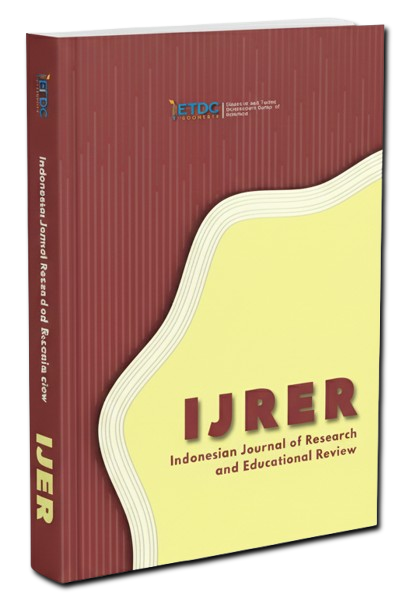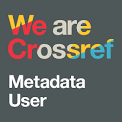Critical Discourse in Teaching English of Speaking Skills
DOI:
https://doi.org/10.51574/ijrer.v3i2.1501Keywords:
Critical Discourse Analysis, Speaking Skills, Teaching EnglishAbstract
The application of critical discourse analysis extends beyond its usage in analyzing and observing social and political materials that are inappropriate for use in English language teaching (ELT). With the aid of the CDA, students will analyze, code, and understand textual content to enhance their speaking skills as they build arguments. This literature study examined pertinent critical discourse analysis studies released in respected journals or as conference proceedings between 2009 and 2021. After that, the papers were sorted and divided into three groups according to the following themes: (1) CDA's contributions to speaking instruction, (2) EFL learners' issues with CDA in their speaking abilities, and (3) studies on the pedagogical effects of CDA on instruction.
References
Abdel-Hack, E. M., & Helwa, H. S. A. H. A. (2004). Using digital storytelling and weblogs instruction to enhance EFL narrative writing and critical thinking skills among EFL majors at faculty of education. Narrative, 5(1), 8-41.
Azhary, L., & Ratmanida, R. (2021). The Implementation of 21st century skills (communication, collaboration, creativity and critical thinking) in English lesson plan at MTsN 6 Agam. Journal of English Language Teaching, 10(4), 608-623.
Bean, J. C., & Melzer, D. (2021). Engaging ideas: The professor's guide to integrating writing, critical thinking, and active learning in the classroom. John Wiley & Sons.
Chen, M. R. A., & Hwang, G. J. (2020). Effects of a concept mapping‐based flipped learning approach on EFL students’ English speaking performance, critical thinking awareness and speaking anxiety. British Journal of Educational Technology, 51(3), 817-834.
Dar, Z. K., Shams, M. R., & Rahimi, A. (2010). Teaching reading with a critical attitude: Using critical discourse analysis (CDA) to raise EFL university students’ critical language awareness (CLA).
Derin, T., Putri, N. S., Nursafira, M. S., & Hamuddin, B. (2020). Discourse analysis (DA) in the context of English as a foreign language (EFL): A chronological review. ELSYA: Journal of English Language Studies, 2(1), 1-8.
Fatsah, H., & Katili, A. (2020). Critical Discourse Analysis on Teacher Talks in The Classroom Communication. Jambura Journal of English Teaching and Literature, 1(1), 40-52.
Fauzan, U. (2017). Inducing critical discourse analysis in speaking syllabus for EFL students of Indonesian Islamic Universities. Dinamika Ilmu, 17(1), 129-141.
Ghanizadeh, A., Al-Hoorie, A. H., & Jahedizadeh, S. (2020). Higher order thinking skills in the language classroom: A concise guide. Springer International Publishing.
Hamdi, S. A. (2023). Developing critical perspectives among EFL learners: Insights from language educators. Education Sciences, 13(1), 81.
Hashemi, M. R., & Ghanizadeh, A. (2012). Critical discourse analysis and critical thinking: An experimental study in an EFL context. System, 40(1), 37-47.
Hazaea, A. N. (2020). Fostering critical intercultural awareness among EFL students through critical discourse analysis. Íkala, Revista de Lenguaje y Cultura, 25(1), 17-33.
Hidayati, I. N., Rosyid, A., & Sutisna, E. (2021). Assimilating Critical Discourse Analysis and Debating Technique to Familiarize Students with the Use of HOTS in the Classroom. Pedagonal: Jurnal Ilmiah Pendidikan, 5(2), 142-150.
Howlett, C., Ferreira, J. A., & Blomfield, J. (2016). Teaching sustainable development in higher education: Building critical, reflective thinkers through an interdisciplinary approach. International Journal of Sustainability in Higher Education, 17(3), 305-321.
Jao, C. Y., Yeh, H. C., & Hung, H. T. (2024). How did the process of robot-assisted multimodal composition facilitate the students’ audience awareness for English writing. Computer Assisted Language Learning, 1-29.
Mahyoob, M. (2020). Challenges of e-Learning during the COVID-19 Pandemic Experienced by EFL Learners. Arab World English Journal (AWEJ), 11(4).
Nimasari, E. P. (2016). Critical discourse analysis in teaching reading. Journal on English as a Foreign Language, 6(2), 119-130.
Prasetyaningsih, R. (2017). Developing reading materials toward critical discourse approach (cda) in reading comprehension of efl learners. In LUNAR (Vol. 1, No. 1).
Rogers, R. (2004). An introduction to critical discourse analysis in education. In An introduction to critical discourse analysis in education (pp. 31-48). Routledge.
Setyono, B., & Widodo, H. P. (2019). The representation of multicultural values in the Indonesian Ministry of Education and Culture-Endorsed EFL textbook: a critical discourse analysis. Intercultural Education, 30(4), 383-397.
Wangdi, J., & Savski, K. (2023). Linguistic landscape, critical language awareness and critical thinking: promoting learner agency in discourses about language. Language awareness, 32(3), 443-464.
Widuna, I. A. (2018). The function of CDA in media discourse studies. JEES (Journal of English Educators Society), 3(1), 119-128.
Wodak, R. (2014). Critical discourse analysis. In The Routledge companion to English studies (pp. 302-316). Routledge.
Xiong, T., & Qian, Y. (2012). Ideologies of English in a Chinese high school EFL textbook: A critical discourse analysis. Asia Pacific Journal of Education, 32(1), 75-92.














1.png)













